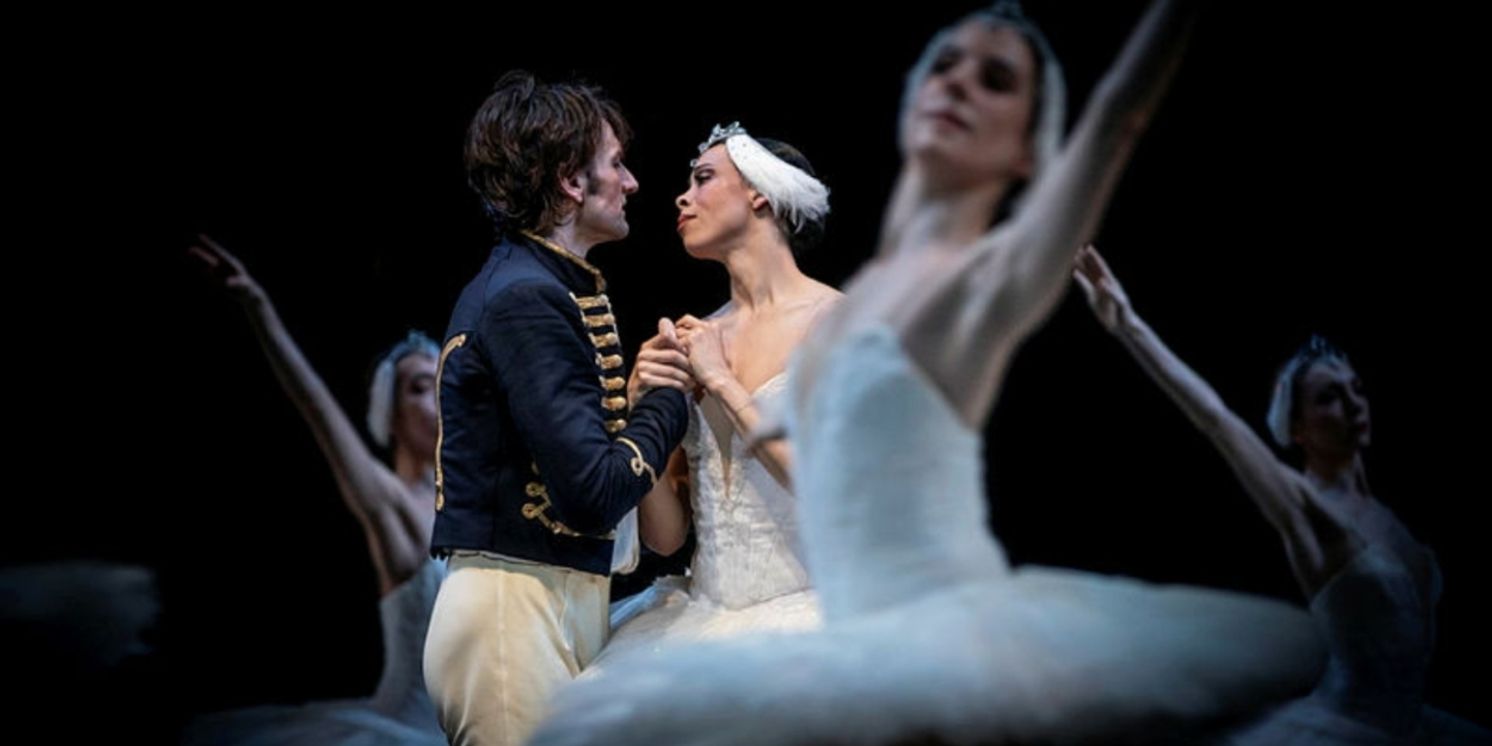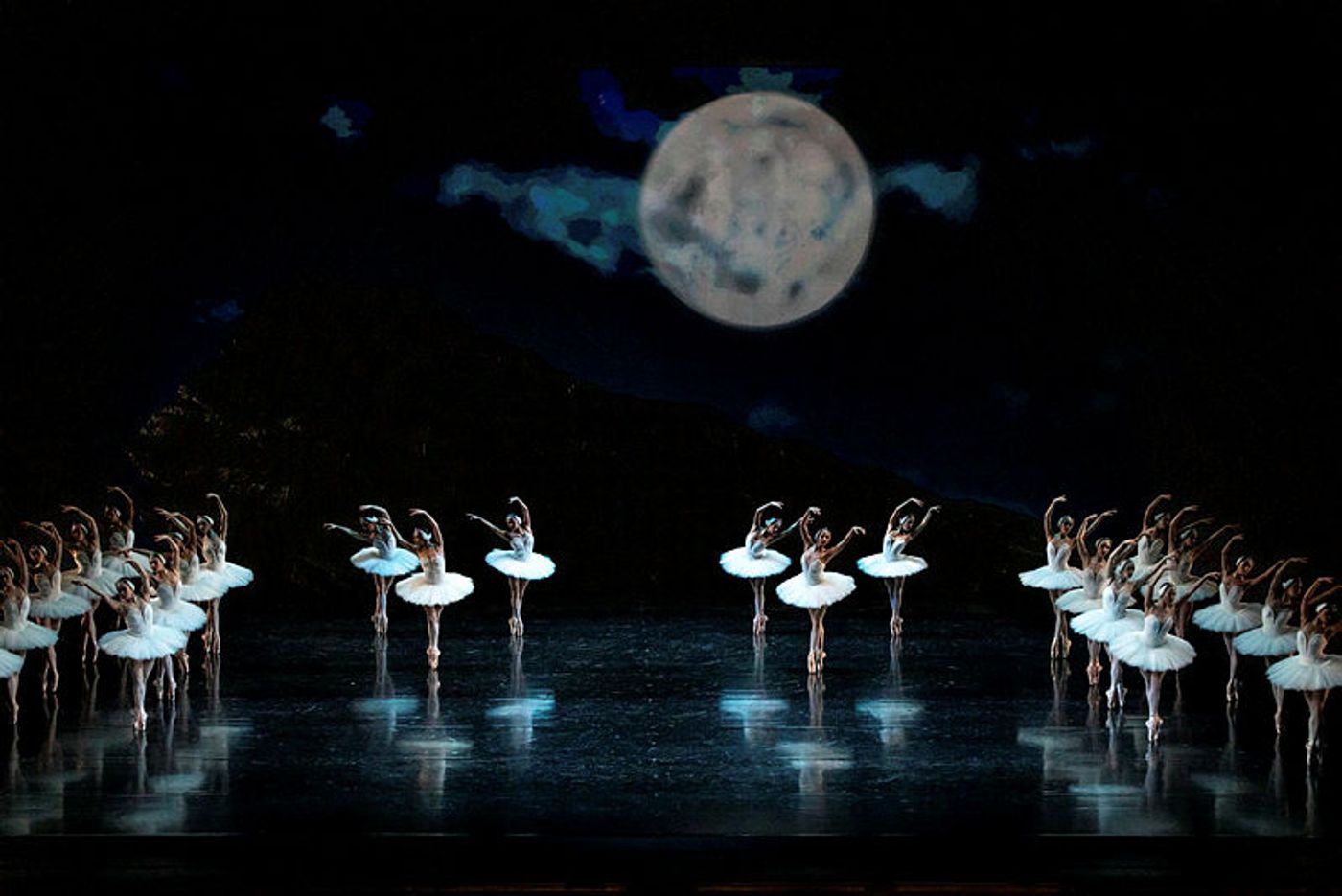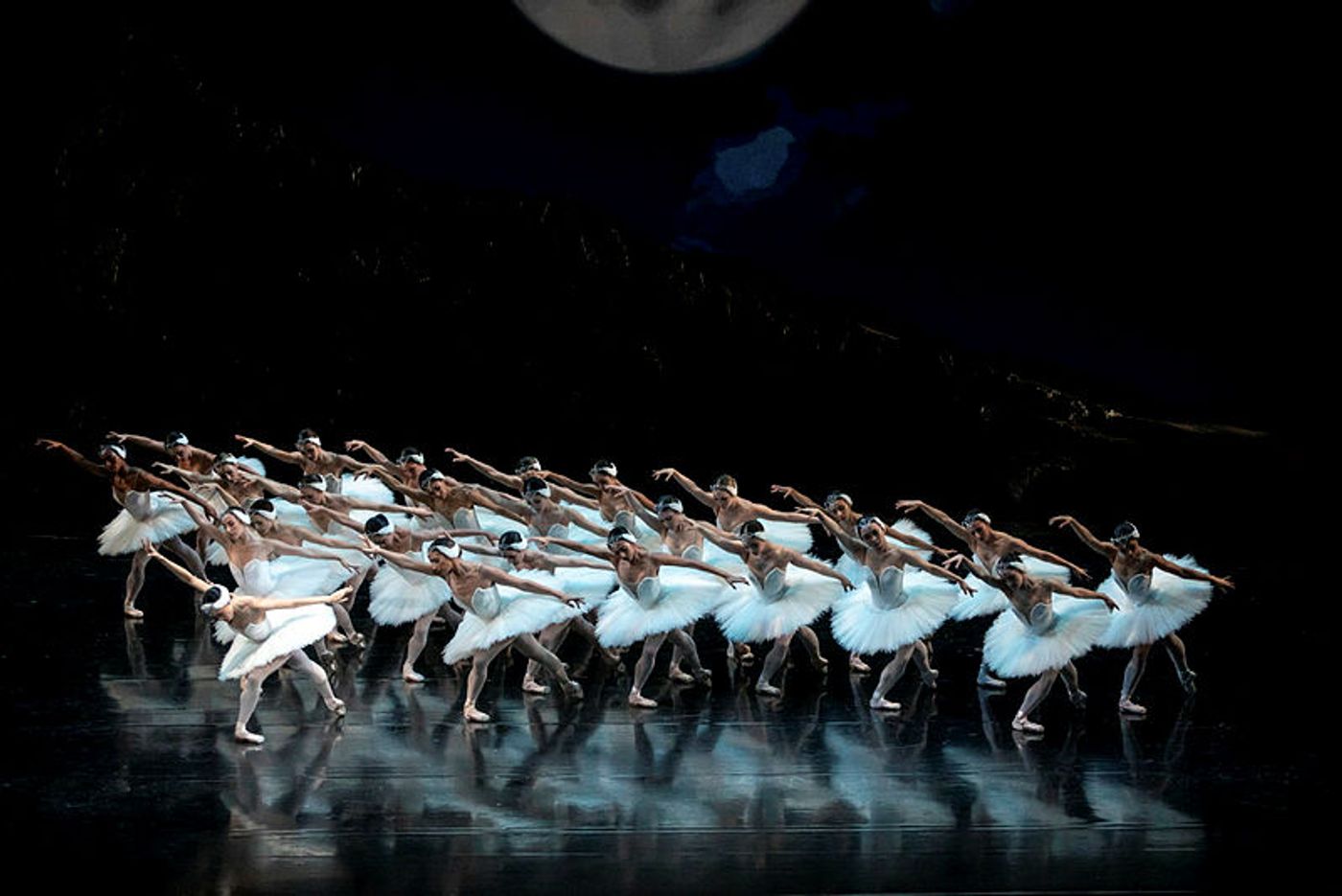Review: SWAN LAKE at San Francisco Ballet
This smashing production of the all-time classic ballet runs through March 3rd at the War Memorial Opera House

Classics are classics for good reason, because they never fail to deliver the emotional goods year after year, decade after decade. I’ve seen San Francisco Ballet’s Swan Lake around forty times and I’m always besotted with it, but I’ve never enjoyed it more than I did this past Tuesday. Everyone onstage was on their A-game to tell this timeless story of a love that transcends death, offering thrills, chills and tears aplenty.
SFB’s Swan Lake was choreographed by its former artistic director, Helgi Tomasson, in 2009 and a few nips and tucks have been made over the ensuing years to tighten the choreography and design in helpful ways. It’s a fairly straight-forward accounting of the ballet because when something works this well, why mess with it? All the expected pleasures are here, including the sublime “white act,” the firecracker Act III "Black Swan" pas de deux, and the story about an evil sorcerer who places young women under a spell that condemns them to live as swans by day and regain their human form only at night. That may sound impossibly hokey until you see it danced this well and suddenly find yourself misting up at the end.

SFB performs the 4-act ballet in a relatively swift two and a half hours (including two intermissions) that seem to fly by. Yeah, this is a grand old warhorse, but the thing moves. And always, always, there’s the transporting Tchaikovsky score with its famous tragic love theme plus an endless supply of other engaging tunes. If it’s been said of the prodigiously gifted composer Richard Rodgers that “the man peed melody,” the same applies to Tchaikovsky. Any 10-minute swatch of this score contains more melodic and harmonic invention than most entire ballets or symphonies.
Following a pair of crisply danced numbers for the Aristocrats and Peasants, Act I was highlighted by a vivacious pas de trois presaging the ballet’s one man caught between two women love story yet to come. It’s also an opportunity for an early-on burst of spectacular dancing, which Katharine Barkman, Isabella Devivo and Esteban Hernández provided in spades. Barkman enchanted with her buoyancy and sharpness (not an easy thing to pull off in a gauzy, Empire-waist gown). DeVivo was delightful in how she played with tempos to bring out the musicality of her solos (she also danced the fizzy Neopolitan Princess in Act III opposite the effervescent Luca Ferrò). Hernández was thrilling in the height and verticality of his leaps and softness of his landings. Better yet, all three were on exactly the same page in terms of style and energy. Isaac Hernández (Esteban’s older brother) as Prince Siegfried danced a sweetly ruminative solo to end Act I, but I wanted to see more inner life from him. This prince was a dashing young man with a pleasing presence, but what was he feeling?
Act II was where the performance really took off, as it always does with Swan Lake, given its magical nighttime world of swan-women under the spell of wicked Von Rothbart (a marvelously malevolent Alexander Reneff-Olson). But make no mistake, these are no shrinking violets. They are hauntingly gorgeous, ethereal beyond measure, kickass warriors and still so intensely strange as to seem eternally avantgarde. All 24 of them were beautifully matched to create a portrait of a cohesive community, fiercely protective of one another. It’s that dynamic that gives the ballet a feminist underpinning even though it dates to almost a century before what we think of as the feminist movement.
They are led by two Swan Maidens, danced on Tuesday by Kamryn Baldwin and Sasha Mukhamedov, both terrific, the latter particularly mesmerizing in her extravagant extension and intense engagement with the music. (Mukhamedov also made a deliciously fiery Spanish Princess in Act III.) Four little swans romp through the iconic, arm-linked, highwire act known as the Dance of the Cygnets. Performed impeccably by Katharine Barkman (again!), Carmela Mayo, Norika Matsuyama and Julia Rowe, it was the very definition of “textbook” in the best sense of that word. Every tilt of the head, every gesture, every little hop and change of direction were exactly as they should be, yet danced with such liveliness that the whole thing was deliriously entertaining.

And then there was the ever-astonishing Sasha De Sola in the dual central roles of Odette/Odile. Well into her second decade with SFB, De Sola just keeps getting better and better. What a distinct pleasure it is to see a seasoned ballerina tackle a mammoth role like this at a point in her career when she’s not only at the peak of her physical powers but has had time to really think through and refine every step to delineate the emotional arc of her character.
When she made her entrance at the top of Act II, I was surprised to that De Sola, normally the most sinuous of dancers, chose to underplay the undulating arms that most ballerinas establish upfront as Odette’s signature move. But then I got it – Odette’s not in love yet, and it’s only once she falls for the prince that her body language begins to change, get dreamier, more fluttery. When she swoons backwards into the prince’s waiting arms the first time, it’s lovely, but she’s still withholding just a bit. When De Sola repeats the move a second time, she melts into such a ravishing backbend that we can literally see her falling in love. Breathtaking!
De Sola’s entire performance was studded with moments like that. Her Odette was a study in strength through vulnerability. Her Odile was its polar opposite, a portrait of strength via cold calculation, the ultimate bad girl. De Sola seemed to be having a riot reeling in her prey with a wicked assurance that said, “I got this!” Of course, De Sola couldn’t have worked her magic if she didn’t have such a marvelous partner in Isaac Hernández. He provided the kind of expert support that never calls attention to itself, and his emotional intensity kicked into gear once he had De Sola to play off of. When he hoisted her aloft for what felt like forever at the end of the “White Swan” pas de deux, it was an act of gallantry that manifested their unbreakable bond. When he romped through the hijinks of the “Black Swan” pas de deux, he was a man in way over his head trying desperately to keep up with his beguiling love interest.
The relatively short final act worked its usual magic as the two lovers met their tragic fate, in death forever breaking Von Rothbart’s spell over the other swans. As dozens of them bowed down low across the moonlit stage under the image of Odette and Sigfried bound together in eternity, and the orchestra’s string section ascended to the heavens in pianissimo, it was impossible not to be profoundly moved. This classic ballet has clearly not lost an iota of its power.
(all photos by Lindsay Thomas)
---
San Francisco Ballet’s Swan Lake continues through Sunday, March 3rd at the War Memorial Opera House, 301 Van Ness Avenue, San Francisco, CA. Running time is approximately two hours thirty-five minutes, including two intermissions. For tickets and additional information, visit www.sfballet.org or call (415) 865-2000, M-F 10am-4pm.
Reader Reviews

Videos

